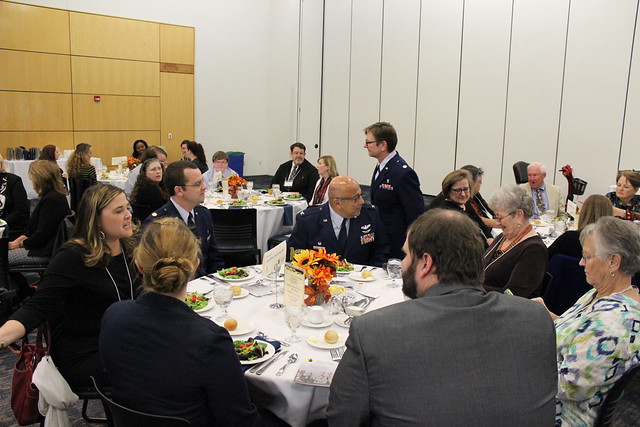 |
| Margaret Avery Rowell and Nicholas Anderson |
The Martha Blakeney Hodges Special Collections &University Archives is pleased to announce the donation of two collections. Nicholas Anderson and Margaret Rowell join the company of the legendary artists represented in the UNCG Cello Music Collection. These collections are donated by the family of Nicholas Anderson.
Cellist Nicholas Anderson was acclaimed as an outstanding interpreter of the solo concert repertoire. His unique and inspired performances were received with the highest praise and enthusiasm by audiences and critics alike. Anderson began playing the cello at the age of eight, and made his first solo appearance on television the following year. In his early teens, Anderson studied in Pittsburgh with Theo Salzman, Principal Cellist of the Pittsburgh Symphony and Professor of Cello at Carnegie Mellon University. He spent his high school years as a resident student at the
North Carolina School of the Arts. Anderson’s cello playing thrived there under the mentorship of Irving Klein, cellist of the internationally renowned Claremont Quartet. It was during this time that he performed in the master classes of Janos Starker, and studied in the summer with the great "cellist's cellist" Leslie Parnas.
Following this period, Anderson studied at Aspen with Claus Adam, cellist of the Juilliard Quartet, and at the age of nineteen, was invited to study at the Juilliard School. However, he became aware of the work of the master cello teacher Margaret Rowell in California and decided to turn down Juilliard and move to California to study with her in 1971. This evolved into a 24-year collaboration, and as his solo career flourished, Anderson became an expert in Rowell's revolutionary methods, both as a performer and teacher.
In terms of his career as a performer, Nicholas Anderson debuted at the National Gallery of Art in Washington, D.C. After moving to New York, his numerous solo concert appearances included the 92nd St. Y Kaufmann Concert Hall, Mannes College of Music, American University, and Community Concerts/Columbia Artists. He has made a specialty of performing the cycle of Beethoven Cello Sonatas, as well as the complete Bach Solo Cello Suites. Anderson premiered many works, as a champion of creative musicality in modern compositions.
In addition to serving on the cello faculty of Queens College, Anderson coalesced the teachings of Margaret Rowell into a dynamic series of classes called the “Breakthrough Cello Seminars,” which he presented worldwide. Organizations that have benefited from Anderson’s seminars include the Associated Music Teacher's League of New York, San Francisco State University, University of Hawaii, Fresno City College, the Pennsylvania Cello Society, the Metropolitan Youth Orchestra Academy of New York, and the Sinfónica Juvenil in San José, Costa Rica.
Margaret Avery Rowell (1900 Redlands, CA- April 21, 1995 San Francisco, CA) was among the most prominent cello pedagogues of the 20th century. In the 1920's and 30's, Rowell had an eminent performing career as the cellist in the Arion Trio, which broadcasted live on NBC radio six days every week. She graduated from UC Berkeley in 1923. In 1927, she contracted tuberculosis and was hospitalized for three years. She later recovered, but after not touching the cello for such a long period, she found that while she still knew the technique and the music, she had lost the instinctive feeling of connection with the instrument. During the journey of Rowell’s intensive journey to recover her physical skill of cello performance, she was able to make conscious the mechanical processes taken for granted by “natural” musicians that she had previously done masterfully but unconsciously. This gave her an unprecedented access to the missing domain of cello-playing, which not only applied to her own work as an artist, but served as the basis for transmitting a breakthrough to generations of other cellists. As a result she came to be in tremendous demand as a teacher of the rarest value.
During her 60-year career, she was known as “the dean of cello teachers in the San Francisco Bay Area,” serving as distinguished Professor of Cello at the San Francisco Conservatory of Music, Stanford University, San Francisco State University, the University of California at Berkeley, and Mills College. Rowell founded the highly successful California Cello Club, which engaged masters such as Gregor Piatigorsky, Mstilav Rostropovich, Janos Starker, and Pablo Casals to speak to Bay Area cellists. The University of Indiana at Bloomington honored her with the title of Grande Dame du Violoncelle, and the American String Teacher Association presented her with their Distinguished Service Award.
Nicholas Anderson and Margaret Rowell are now the 14th and 15th musicians to be represented in the
UNCG Cello Music Collection. Consisting of the archival music collections of Luigi Silva, Elizabeth Cowling, Rudolf Matz, Maurice Eisenberg, János Scholz, Fritz Magg, Bernard Greenhouse, Laszlo Varga, Lev Aronson, Lubomir Georgiev, Marion Davies, and Douglas Moore, Ennio Bolognini, Nicholas Anderson, and Margaret Rowell, the Cello Music Collection at The University of North Carolina at Greensboro constitutes the largest single holding of cello music-related material worldwide.










































